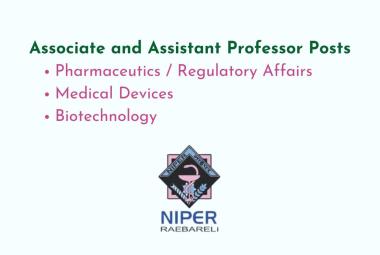Q.5. (a) Discuss various pumping systems, columns & detectors in HPLC. Ans.5. (a) pumping system in HPLC Analytical Pumps (Solvent Delivery System) The requirements for HPLC pumps are as follows: They must be able to generate high pressures, have a pulse free output, deliver flow rates ranging from 0.1 to 10 ml/min, have flow reproducibility’s of 0.5% relative or better and they must be resistant to corrosion by a variety of solvents. Various types of pumping systems are
[adsense:336x280:8701650588]
A.Direct Gas-pressure Systems This system consists of a cylinder gas pressure, which is applied directly to the eluent in a holding coil.
Advantages of this pump are that it is reliable and economical although solvent changing is found to be tedious.
B. Syringe type Pumps In these pumps an electrically driven lead-screw moves a piston, which is able to pressurize a finite volume of solvent, and thus delivers a pulseless constant flow of solvent to the system. These pumps are found to be reliable although they are expensive, solvent changing is tedious and they have a finite capacity. (~250 ml)
C.Pneumatic Intensifier (Constant Pressure) Pumps These pumps are operated via gas pressure. A large area piston drives a small area piston when acted on by pressure from a gas line. The gas pressure is thus amplified in the ratio of the areas of the forces of the pistons and a highpressure liquid at constant pressure is introduced into the system. If a partial blockage occurs in this system a drop in flow rate occurs but the pressure remains constant. The flow sensitivity of the detector cell will determine how much pulse damping is required in the system to suppress the detector signal caused when the flow stops during the return stroke.
D. Reciprocating (Constant Flow) Pumps It is the most generally used pump as it is economical and allows a wide range of flow rates. There is no limit on the reservoir size or operating time with this pump as is commonly found with other pumps. This pump is electrically driven by a motor, which moves back and forth within a hydraulic chamber. On the backward stroke the piston sucks in eluent from the reservoir and due to check valves the outlet to the separation Column is closed. During the forward stroke the eluent is pushed onto the column and the inlet from the reservoir is closed. These pumps include a high output pressure with constant flow rates and the ability to be used for gradient elution.
Types of Stationary Phases
Various stationary phases available for HPLC are Polystyrene/Divinylbenzene- Based Resins In ion chromatography, the support material is a polystyrene/ divinylbenzene (PS/DVB) based resin that is relatively stable with respect to pH.
The copolymerization of PS with DVB is used to give the resin mechanical stability. The amount of DVB in the resin is denoted as “percent crosslinking”. The percentage of cross linking is directly related to the extent to which PS/DVB resin shrinks or swells in an aqueous media or in the presence of organic solvents. If the resin shrinks a loss in column efficiency occurs as a dead volume occurs at the beginning of the column. Swelling of the resin leads to higher column backpressures. The optimum degree of cross linking is said to be 2-5%
A. Anion –Exchange Resin
These resins used by Dionex are composed of a surface sulphonated PS/DVB core (10-25 µm) and a totally porous latex particle (0.1 µm), which is completely aminated. Electrostatic and van der Waals interactions are used to agglomerate the latex particles onto the core particles. It is the latex particles that carry the actual ion exchange function. Advantages of this stationary phase include mechanical stability of the resin due to the inner core, which also ensures moderate backpressures. Rapid exchange processes and thus high efficiencies occur due to the small, totally porous, latex particles. Surface sulphonation greatly reduces swelling and shrinking of the material.
B. Cation-Exchange Resins
The stationary phase of a cation exchange column is based on inert, surface sulphonated, cross linked polystyrene.
The exchange process for a cation M+, occurs as follows:
~SO3H+ + M+A-<--------->~SO3M+ + H+A-
Find more info on Next Page...
Subscribe to Pharmatutor Job Alerts by Email
Silica based Resins
Silica based resins are one of the most important classes of ion-exchangers used in chromatography. There are two main groups of silica based materials namely polymer coated and functionalized silica materials. Polymer coated materials consist of silica particles which are coated with a layer of polymer such as polystyrene, silicone or fluorocarbon and then derivitised to introduce functional groups. The advantages of polymer coated materials are that diffusion in the thin layer of the polymer occurs more rapidly than it would in totally polymeric particles. Functionalized silica materials comprise a functional group, which is chemically bonded directly to a silica particle. A disadvantage of silica based resin is that they can only be operated over a limited pH range.
Chelating Resins
Chelating resins, which are able to separate metal ions, are made up of a suitable ligand immobilized onto a stationary phase. Many chelating resins have been synthesized using styrene-divinyl benzene polymers or silica as the support material. The ligands are chemically bound to the stationary phase by an appropriate reaction. Broad peaks are characteristic of slow formation and dissociation rates.
Columns in HPLC: Three types of HPLC columns are in common use today; they differ in the nature of the packing material coating the column and interacting with the sample.
1. Ion-Exchange Column
Experimenters use Ion Exchange Chromatography when separating ionizable samples, or samples that can become charged. The stationary phase, which is the solid material lining the column and interacting with the sample, possesses a charge opposite that of the sample of interest, so that the sample will be attracted to the walls of the column. This attraction slows down the elution time, or time it takes to pass all the way down the column in the mobile phase, of the sample. The more charged the sample particles are, the more attracted they will be to the stationary phase, resulting in a slower elution time. The elution times represent the strength of the charge of the particles, and thus are the primary means of classification of the different compounds within the sample.
2. Adsorption Column
As its name indicates, Adsorption Chromatography functions via an adsorbent stationary phase. Adsorption, not to be confused with absorption, involves the temporary binding of the sample particles to the stationary phase of the column. The degree to which a sample particle may adsorb to the stationary phase is determined by the relative polarity, or charge, that the particle may possess at a given time. This varies from ion-exchange chromatography in that the particles are not explicitly charged, rather they are slightly positive or negative at times as the particle rotates and vibrates. As the particle moves down the column, it adsorbs and de-adsorbs to varying degrees based on the level of polarity it possesses. Elution times provide a measure of level of polarity of the sample particles.
3. Size-Exclusion Column
Size-Exclusion Chromatography utilizes a different separation technique than that of Ion Exchange or Adsorption Chromatography. This column type is less common than the other two, but is useful when separating large biomolecules like proteins or carbohydrates. The stationary phase is made up of uncharged particles, which are size-controlled and porous. When the sample is fired through the column, the smaller sized particles are temporarily absorbed into the column lining, whereas the larger particles pass straight through and elute first. The stationary phase is designed so that the smaller the particle, the deeper into the column lining it penetrates, meaning that the smallest particles will take the longest amount of time to re-surface and elute. Samples can be classified according to elution time, which corresponds directly to particle size.
Detectors of HPLC:
1. UV Detectors
UV detectors measure the change in the UV absorption as the solute passes through a flow cell. In a UV transparent solvent UV detectors are concentration sensitive. It has a degree of selectivity and is useful for many HPLC applications.
2. Refractive Index Detectors
These detectors measure the change in refractive index in the eluent as the solute passes through the sample cell. It is virtually a universal detector but has limited sensitivity as compared to UV detector although non chromatographic compounds can be measured directly without derivitisation.
3. Fluorometric Detectors
In this detection system the solute is excited by UV radiation at a particular wavelength and the emission wavelength is detected.
This detection has been used with naturally fluorescent compounds but compounds can be reacted to produce fluorescent derivatives. These detectors are highly selective and sensitive, often used to analyze derivatized compounds.
4. Conductivity Detector
These are used to analyze charged or polar compounds and the mobile phase used must be conducting in these detectors.
It is excellent for ion exchange methods.
5. Electro-chemical Detector
Such detectors are used to analyze readily oxidized or reduced compounds, especially biological samples. In these detectors also, the mobile phase must be conducting. The advantage of these detectors is that these are very selective and sensitive.
6. Evaporative light scattering Detectors (ELSD)
These are used to analyze virtually all compounds. In these detectors, volatile solvents and volatile buffers are used. It is a universal detector which is highly sensitive but not selective.
7. Mass spectrometer (MS)
It is used to analyze a broad range of compounds, in such detection, volatile solvents and buffers are used most importantly.
This detection is highly sensitive and is a powerful 2-dimensional analytical tool









